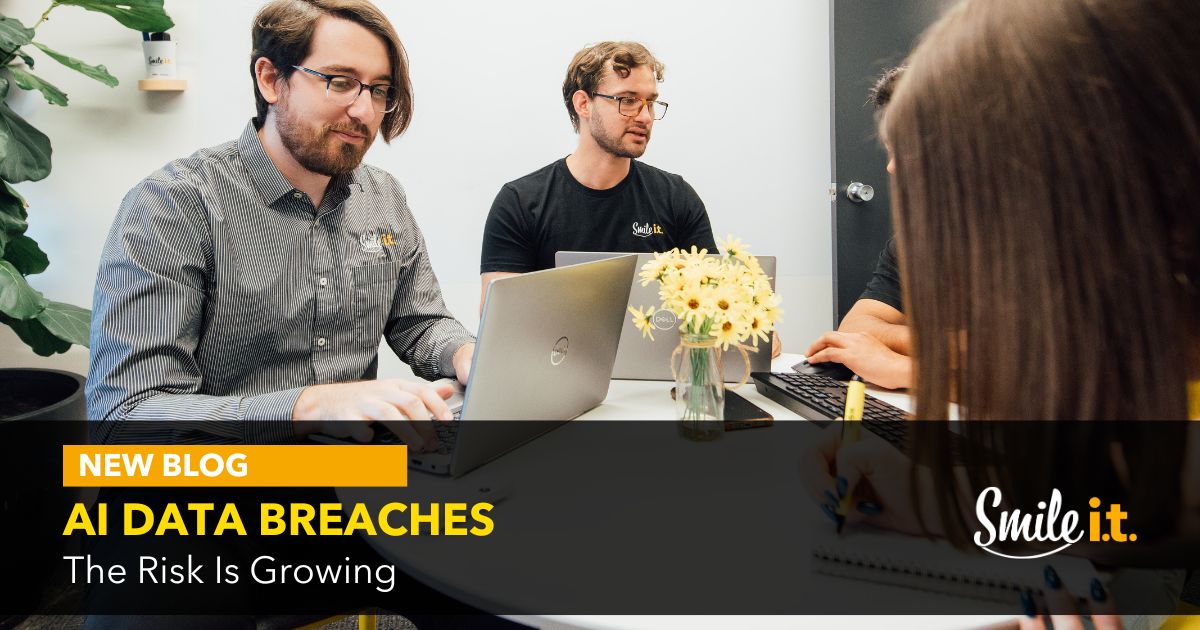In what seems like a very short time, AI has become invaluable to businesses all over the world. We rely on generative technology for everything from creating content to writing code and even scheduling our working day for us! It’s a massive time saver, and it’s becoming tricky to imagine a world where we didn’t have the innovative solutions and automation capabilities we get from AI.
But there’s a catch, and that’s what we want to talk about today.
AI technology is incredibly vulnerable to breaches, which according to an AI Threat Landscape Report put out this year is becoming a serious problem.
How serious? Well, in the last year, over 77% of businesses have experienced and reported a breach in their AI.
Why is AI Vulnerable?
Chris Sestito, the founder and CEO of Hidden Layer, the organisation behind the AI Security report, had this sobering thought about the security of AI:
“Artificial intelligence is, by a wide margin, the most vulnerable technology ever to be deployed in production systems. It’s vulnerable at a code level, during training and development, post-deployment, over networks, via generative outputs, and more.”
Why is this the case? What is it making AI so vulnerable? There are a few reasons, with the main ones being as follows:
Expanding Attack Surface: AI has exploded in the last couple of years. The adoption continues, and with this growth the number of potential entry points for attackers increases too. The AI models, pipelines and underlying infrastructure can all be targeted by hackers.
The Data Conundrum: AI loves data – it thrives on it. The more data you have and the better your data is, the more powerful your AI systems. Unfortunately, this makes it a tempting target for hackers interested in getting their own hands on your valuable business data.
Another problem with data is that if it’s not trustworthy, the AI malfunctions. Attackers can use this to their advantage and purposefully poison AI systems with bad data. This causes the AI system to behave in an undesirable manner.
Attackers are Getting Smarter: As the stakes get higher, the attack techniques are getting more advanced. Hackers are employing advanced methods such as manipulating the algorithm and creating adversarial inputs to deceive AI models.
Deepfakes: Very authentic looking deepfake videos, images and audio can be used as a form of social engineering to steal money, extract sensitive information or other data and even ruin reputations. One UK engineering company was the victim of a $25-million scam when their financial officer approved a transfer after being instructed to by a deepfake video meeting with his boss and other colleagues.
How an AI Data Breach Can Affect an Organisation
As with any data breach, the effects on an organisation can be far-reaching and damaging when an AI system is hacked. Let’s take a look at the main ways your company could be negatively affected:
Financially: The financial fallout from an AI data breach can be particularly damaging. The breaking of strict breach notification laws could lead to a massive fine, the size of which can often bring a business to its knees. There are also legal fees, PR expenses and all the costs associated with reputational damage to deal with. Lost revenue can also add up, because many potential clients will take their business elsewhere.
Productivity: An AI data breach will often disrupt mission-critical operations, causing productivity to crash.
Intellectual Property Theft: It’s not just your business intellectual property, your AI models themselves can be considered intellectual property. Attackers could gain access to them and use them to gain a significant competitive advantage.
Privacy: AI privacy is a big one because an AI data breach can compromise sensitive customer and employee information. AI systems collect, process and store personal data that feeds the model and allows it to operate as it should. If this sensitive information makes its way into the public sphere, there will be regulatory reactions as well as reputational damage.
How to Strengthen Your Defences against an AI Breach

Data Governance: Your AI operates on data, so robust data governance practices are necessary to keep it secure. Data should be classified and labelled based on its sensitivity, with clear access controls in place and regular monitoring of usage. It would also be worth implementing security solutions purpose-built to provide runtime protection for AI models.
Threat Modelling: This will help you understand any vulnerabilities that hackers could exploit and give insights into their attack vectors. You can then rank vulnerabilities and allocate resources for remediation.
Design Security: When adopting or developing new AI, implement advanced security considerations such as penetration testing, vulnerability testing and adopting secure coding practices. Anybody working with the data should be trained in the AI attack vectors out there.
Patch Management: Keep your AI models and data pipelines updated with the latest security patches. An outdated system is far more susceptible to hackers.
Continuous Monitoring: You need to be able to detect AI security incidents before they take hold and cause damage to your organisation. Then a robust AI response plan should also be in place to address breaches fast.
Staying Informed: This space evolves daily, and you want to keep your finger on the pulse of what’s going on. Saying updated on the latest security threats and best practices – seek out online workshops, attend industry conferences, and subscribe to cybersecurity publications. There’s too much at stake not to be informed.
Partner with a Managed IT Service Provider
AI is here to stay, and you want your business to leverage the positive effects it can have on productivity and efficiency. If you neglect the security risks, your business data is going to be exposed. Understanding the risks and implementing the mitigation strategies above are essential to staying safe.
Partnering with a managed IT service provider like Smile IT is a way of putting the protection of your IT ecosystem into professional and safe hands. We’ll put proactive measures in place to turn your business into a fortress against data breaches, keeping you secure in a space that is getting increasingly dangerous.
If you have questions or would like to get the ball rolling on making your business more secure, get in touch with one of our team today!
When he’s not writing tech articles or turning IT startups into established and consistent managed service providers, Peter Drummond can be found kitesurfing on the Gold Coast or hanging out with his family!


